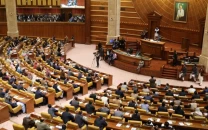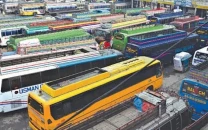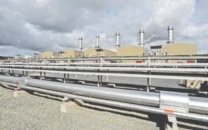Provincial debt rises to Rs1.71 trillion
Bulk comprises concessional, long-term loans in foreign currencies

Punjab's total debt stock increased by Rs25 billion during the fiscal year 202425, reflecting a 1.5 per cent year-on-year rise, according to official budget documents released on Monday.
By the end of the ongoing month, the province's overall debt will reach Rs1,710 billion, up from Rs1,685 billion in June 2024. The debt comprises Rs1,709 billion from external sources and just Rs1.29 billion from domestic lenders, accounting for 2.7 percent of Punjab's Gross State Domestic Product.
While external debt rose by Rs26 billion over the year, domestic debt fell from Rs1.7 billion to Rs1.29 billion, marking a 22.5 % decrease. In dollar terms, Punjab's external debt stands at approximately $6.1 billion. The bulk of this debt is sourced from concessional, long-term loans extended in foreign currencies by multilateral and bilateral lenders.
These include the World Bank, Asian Development Bank (ADB), Japan International Cooperation Agency (JICA), and the International Fund for Agricultural Development (IFAD), as well as bilateral partners such as China, Japan, and France. Though these loans are contracted by the federal government, they are disbursed to Punjab to support development initiatives.
The budget report breaks down external debt into the broad categories of project loans, which finance long-term public infrastructure, and programme loans, which offer budgetary support tied to policy reforms or targeted spending. As of June 2025, Punjab owes $4.81 billion to multilateral lenders and $1.29 billion to bilateral sources.
The external debt portfolio is largely denominated in US dollars (68%), followed by Special Drawing Rights (SDRs) at 23%, Japanese yen at 5%, and other currencies making up the remaining 4%.
Sector-wise, agriculture, irrigation, and livestock absorbed the largest share of debt-financed investments, accounting for 24% of total outstanding loans. This was followed by the transport and communications sector with 20%, education with 19%, and urban and community development with 17%. Governance-related borrowing constituted 11%, health 5%, energy 2%, tourism 1%, and industries and infrastructure another 1%.
Officials said despite the increase in total debt stock, the province maintains a low debt-to-GSDP ratio and relies predominantly on concessional borrowing for development priorities.






















COMMENTS
Comments are moderated and generally will be posted if they are on-topic and not abusive.
For more information, please see our Comments FAQ